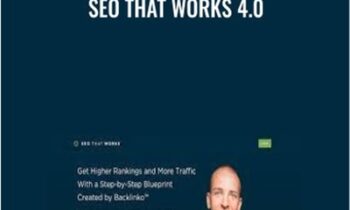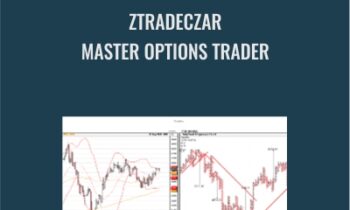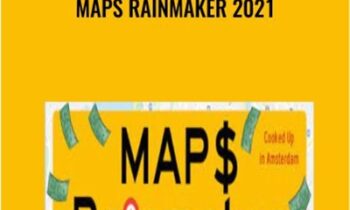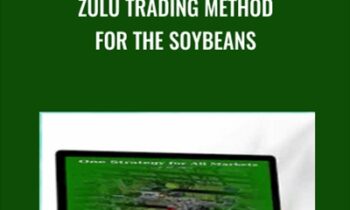$897.00 Original price was: $897.00.$169.00Current price is: $169.00.
Become the time-series domain expert for your organization
 Purchase this course you will earn 169 Points worth of $16.90
Purchase this course you will earn 169 Points worth of $16.90Elevate your skills with the High Performance Time Series – Matt Dancho- Business Science course, available for just $897.00 Original price was: $897.00.$169.00Current price is: $169.00. on Utralist.com! Browse our curated selection of over 60,000 downloadable digital courses across diverse Business and Sales. Benefit from expert-led, self-paced instruction and save over 80%. Start learning smarter today!
Salepage link: At HERE. Archive: https://archive.is/wip/IBDQO
Total sizes: 715 MB – include:
Buy now $169 $897, High Performance Time Series – Matt Dancho- Business Science Course.
Become the Time Series Expert
for your organization
The High-Performance Time Series Forecasting Course is an amazing course designed to teach Business Analysts and Data Scientists how to reduce forecast error using state-of-the-art forecasting techniques that have won competitions. You’ll undergo a complete transformation learning the most in-demand skills that organizations need right now. Time to accelerate your career.
Undergo a Complete Transformation
By learning forecasting techniques that get results
With High-Performance Forecasting, you will undergo a complete transformation by learning the most in-demand skills for creating high-accuracy forecasts.
Through this course, you will learn and apply:
Machine Learning & Deep Learning
Feature Engineering
Visualization & Data Wrangling
Transformations
Hyper Parameter Tuning
Forecasting at Scale (Time Series Groups)
How it works
Your path to becoming an Expert Forecaster is simplified into 3 streamlined steps.
1 Time Series Feature Engineering
2 Machine Learning for Time Series
3 Deep Learning for Time Series
Part 1
Time Series Feature Engineering
First, we build your time series feature engineering skills. You learn:
Visualization: Identifying features visually using the most effective plotting techniques
Data Wrangling: Aggregating, padding, cleaning, and extending time series data
Transformations: Rolling, Lagging, Differencing, Creating Fourier Series, and more
Feature Engineering: Over 3-hours of content on introductory and advanced feature engineering
Part 2
Machine Learning for Time Series
Next, we build your time series machine learning skills. You learn:
17 Algorithms: 8 hours of content on 17 TOP Algorithms. Divided into 5 groups:
ARIMA
Prophet
Exponential Smoothing – ETS, TBATS, Seasonal Decomposition
Machine Learning – Elastic Net, MARS, SVM, KNN, Random Forest, XGBOOST, Cubist, NNET & NNETAR
Boosted Algorithms – Prophet Boost & ARIMA Boost
Hyper Parameter Tuning: Strategies to reduce overfitting & increase model performance
Time Series Groups: Scale your analysis from one time series to hundreds
Parallel Processing: Needed to speed up hyper parameter tuning and forecasting at scale
Ensembling: Combining many algorithms into a single super learner
Part 3
Deep Learning for Time Series
Next, we build your time series deep learning skills. You learn:
GluonTS: A state-of-the-art forecasting package that’s built on top of mxnet (made by Amazon)
Algorithms: Learn DeepAR, DeepVAR, NBEATS, and more!
Challenges & Cheat Sheets
Next, we build your time series machine learning skills. You learn:
Cheat Sheets: Developed to make your forecasting workflow reproducible on any problem
Challenges: Designed to test your abilities & solidify your knowledge
Summary of what you get
A methodical training plan that goes from concept to production ($10,000 value)
Part 1 – Feature Engineering with Timetk
Part 2 – Machine Learning with Modeltime
Part 3 – Deep Learning with GluonTS
Challenges & Cheat Sheets
Course Curriculum
Welcome to High Performance Time Series!
High-Performance Time Series – Become the Time Series Expert for Your Organization (2:34)
Private Slack Channel – How to Join
Video Subtitles (Captions)
What is a High-Performance Forecasting System?
[IMPORTANT] System Requirements – R + Python Requirements & Common Issues
Would You Like To Become An Affiliate (And Earn 20% On Your Sales)?
Prerequisites
Prerequisite – Data Science for Business Part 1
Getting Help
Getting Help (IMPORTANT!!!)
Module 0 – Introduction to High-Performance Forecasting
High-Performance Forecasting – What You’re Learning, Why You’re Learning It (0:43)
0.1 Forecast Competition Review
The Forecasting Competition Review & Course Progression (3:34)
2014 Kaggle Walmart Recruiting Challenge (5:11)
2018 M4 Competition (3:37)
2018 Kaggle Wikipedia Website Traffic Forecasting Competition (4:30)
2020 M5 Competition (5:59)
5 Key Takeaways from the Forecast Competition Review (5:41)
0.2 Course Projects – Google Analytics, Email Subscribers, & Sales Forecasting
The Business Case – Developing a Best-in-Class Forecasting System (3:03)
0.3 What Tools are in Your Toolbox?
Timetk: Time Series Data Preparation, Visualization, & Preprocessing (5:54)
Modeltime: Time Series Machine Learning (5:25)
GluonTS: Time Series Deep Learning (2:01)
[Cheat Sheet] Forecasting Workflow
Module 01 – Time Series Jumpstart
Time Series Jumpstart (0:54)
1.1 Time Series Project Setup
Project Setup (2:28)
Course Data (File Download) (1:02)
R Package Installation – Part 1 (File Download) (5:26)
R Package Installation – Part 2 (5:14)
Jumpstart Setup (File Download) (0:44)
1.2 Business Understanding & Dataset Terminology
Establish Relationships, Part 1 – Google Analytics Summary Dataset (4:11)
Establish Relationships, Part 2 – Google Analytics Top 20 Pages (5:23)
Build Relationships – Mailchimp & Learning Lab Events (4:49)
Generate Course Revenue – Transaction Revenue & Product Events (3:03)
Code Checkpoint (File Download) (0:54)
1.3 TS Jumpstart: Dive into Forecasting Email Subscribers!
Read This! – Time Series Jumpstart Intent
Time Series Jumpstart – Setup (File Download) (3:20)
Libraries & Data (3:13)
1.3.1 Exploratory Data Analysis for Time Series
EDA for Time Series (1:08)
Summarize By Time (5:46)
Time Series Summary Diagnostics (4:47)
Pad by Time (4:08)
Visualize the Time Series (3:12)
1.3.2 Evaluation & Train/Test Windows
Evaluation Window – Filter By Time (4:43)
Time Series Train/Test Split (4:53)
1.3.3 Forecasting with Prophet
Training a Prophet Model with Modeltime (4:21)
Modeltime Forecasting Workflow – Round 1 (7:43)
1.3.4 Forecasting with Feature Engineering
Visualizing Seasonality (4:34)
Feature Engineering – Part 1 (5:45)
Feature Engineering – Part 2 (5:51)
Machine Learning with Workflows (3:35)
Modeltime Forecasting Workflow – Round 2 (5:59)
1.3.5 Recap & Code Checkpoint – Module 01 – TS Jumpstart
Here’s where you are going. (3:11)
Code Checkpoint (File Download)
✨[Part 1] Time Series with Timetk
Welcome to Part 1 – Time Series with Timetk! (2:17)
Module 02 – Time Series Visualization
Setup (File Download) & Overview – Visualization (2:11)
Data Preparation – Part 1 (4:29)
Data Preparation – Part 2 (3:23)
2.1 Time Series Plots [MUST KNOW FUNCTION]
[MUST KNOW] Plotting Time Series (5:31)
Plotting with Transformations (4:37)
Adjusting the Smoother (6:11)
Smoother for Groups (1:54)
Interactive & Static Plots (2:00)
2.2 Autocorrelation Plots
ACF & PACF Concepts – Autocorrelation & Partial Autocorrelation
ACF & PACF Plotting (7:49)
Lag Adjustment (1:24)
CCF Plotting – Cross Correlations (7:58)
2.3 Seasonality Plots
Seasonality Box Plot (5:52)
Seasonality Violin Plot (0:53)
2.4 Anomaly Plots
Anomaly Plot Basics (4:50)
Getting the Anomaly Data (2:00)
Working with Grouped Data (1:43)
2.5 STL Decomposition & Regression Plots
STL Decomposition Plot (4:44)
STL Decomposition – Grouped Time Series (2:11)
2.6 Regression Plots [SECRET WEAPON FOR FEATURE ENGINEERING]
[SECRET WEAPON] Time Series Regression Plot (7:08)
Time Series Regression Plot – Grouped Time Series (4:05)
2.7 Code Checkpoint – Module 02 – Visualization
Code Checkpoint (File Download)
Module 03 – Time Series Data Wrangling
Setup (File Download) & Overview – Data Wrangling (2:34)
3.1 Summarise By Time [MUST KNOW]
Single & Grouped Time Series Summarizations (4:37)
Using Across (to Summarize Wide-Format Tibbles by Time) (5:11)
Weekly/Monthly/Quarterly/Yearly Aggregations (3:33)
Floor, Ceiling, Round (5:15)
3.2 Pad by Time
Filling in Gaps (2:54)
From Low-Frequency to High-Frequency (3:36)
3.3 Filter By Time
Zooming & Slicing (5:14)
Offsetting by Time (2:01)
3.4 Mutate By Time
Extrapolate the Mean, Median, Max, Min By Time (7:57)
3.5 Joining By Time
Combining Subscribers & Web Traffic (3:48)
Inspecting the Join (3:00)
Formatting the Join for Feature Relationships (5:49)
Join Cross Correlations (3:22)
3.6 Time Series Index Operations
Making a Time Series (4:39)
Making a Holiday Sequence (3:14)
Time Offsets (3:01)
Making a Future Time Series (3:12)
3.7 Forecasting with Future Frames
The Future Frame (2:47)
[FORECAST SPOTLIGHT] Forecasting with the Future Frame (6:53)
3.8 Code Checkpoint – Module 03 – Data Wrangling
Code Checkpoint (File Download)
Module 04 – Transformations for Time Series
Setup (File Download) & Overview – Transformations (2:15)
Libraries & Data (2:12)
4.1 Variance Reduction Transformations – Log & Box Cox [MUST KNOW]
Why is Variance Reduction Important? (4:43)
Log – Log (and Log1P) Transformation (4:17)
Log – Assessing the Benefit of Log1P Transformation (2:51)
Log – Groups & Inversion (3:43)
Box Cox – What is the Box Cox Transformation? (2:34)
Box Cox – Assessing the Benefit (4:04)
Box Cox – Inversion (2:05)
Box Cox – Managing Grouped Transformations & Inversion (8:36)
4.2 Rolling & Smoothing Transformations
Introduction to Rolling & Smoothing (1:49)
Rolling Windows – What is a Moving Average? (File Download) (3:53)
Rolling Windows – Moving Average & Median Applied (8:53)
Loess Smoother (7:02)
Rolling Correlation – Slidify, Part 1 (4:16)
Rolling Correlation – Slidify, Part 2 (7:40)
[BUSINESS SPOTLIGHT] The Problem with Forecasting using a Moving Average (6:43)
4.3 Range Reduction Transformations
Introduction to Normalization & Standardization (0:59)
What is Normalization? [Min = 0, Max = 1] (4:50)
What is Standardization? [Mean = 0, Standard Deviation = 1] (2:31)
4.4 Imputation & Outlier Cleaning
Introduction to Imputation & Outlier Cleaning (0:44)
Imputation – Time Series NA Repair (6:40)
Anomalies – Time Series Outlier Cleaning (7:22)
Anomalies – When to Remove Outliers (5:21)
4.5 Lags & Differencing Transformations [MUST KNOW]
Introduction to Lags & Differencing (1:08)
Lags – What is a Lag? (1:49)
Lags – Lag Detection with ACF/PACF (3:54)
Lags – Regression with Lags (5:06)
Differencing – Growth vs Change (4:00)
Differencing – Acceleration (6:22)
Differencing – Comparing Multiple Time Series (4:44)
Differencing – Inversion (0:57)
4.6 Fourier Series [MUST KNOW]
Introduction to the Fourier Series (7:23)
Fourier Regression (4:24)
4.7 Constrained Interval Forecasting [FORECAST SPOTLIGHT]
What is the Log Interval Transformation? (5:47)
Visualizing the Transformation (4:12)
Transformations & Preprocessing (5:09)
Modeling (6:29)
Preparing Future Data (3:36)
Making Predictions (1:05)
Combining the Forecast Data (4:08)
Estimating Confidence Intervals (8:24)
Visualizing Confidence Intervals (2:10)
Inverting the Log Interval Transformation (4:08)
4.8 Code Checkpoint – Module 04 – Transformations
Code Checkpoint (File Download)
⛰️ Challenge #1 – Exploring Transactions & Web Page Traffic
Challenge #1 Discussion (File Download) (4:21)
Solution – Part 1 (File Download) (7:18)
Solution – Part 2: Begins at “Identify Relationships” (7:51)
Module 05 – Introduction to Feature Engineering (for Time Series)
Setup (File Download) & Overview – Intro to Feature Engineering (2:30)
Data Prep, Part 1 – Log Standardize (5:27)
Data Prep, Part 2 – Getting Ready to Clean (5:01)
Data Prep, Part 3 – Targeted Cleaning with Between Time (4:18)
5.1 Time-Based Features (Trend & Seasonal/Calendar) [MUST KNOW]
The Time Series Signature (7:55)
Feature Removal (3:28)
Linear Trend (2:10)
Non-Linear Trend – Basis Splines (4:41)
Non-Linear Trend – Natural Splines (Stiffer than Basis Splines) (4:29)
Seasonal Features – Weekday & Month (3:21)
Seasonal Features – Combining with Trend (5:23)
5.2 Interactions
Interaction Features – Spikes Every Other Wednesday (7:35)
5.3 Fourier Features
Selecting & Adding Fourier Frequency Features (4:21)
Modeling & Visualizing the Fourier Effects (2:07)
5.4 Autocorrelated Lag Features
Selecting & Adding Lag Features (6:59)
Modeling & Visualizing the Lag Effects (5:20)
5.5 Special Event Features
Preparing Event Data for Analysis (6:34)
Visualizing Events (2:57)
Modeling & Visualizing Event Effects (2:08)
Fixing the Spline (2:07)
5.6 External Regressors (Xregs)
Transforming Xregs (5:05)
Joining Xregs (1:49)
Examining Cross Correlations (1:53)
Modeling with Xregs (3:28)
Visualizing PageViews vs Optins & Modeling Lags (6:58)
5.7 Recommended Model Features
Collecting the Recommended Model (3:44)
Saving the Model Artifact (2:28)
5.8 Code Checkpoint – Module 05 – Introduction to Feature Engineering
Code Checkpoint (File Download)
Module 06 – Advanced Feature Engineering Workflow
Forecasting Workflow [CHEAT SHEET] ️ (3:40)
Setup (File Download) & Overview – Advanced Feature Engineering (1:43)
Data Preparation (4:42)
6.1 Creating the “Full” Dataset – Extending & Adding Lagged Features & Events [IMPORTANT]
The “Full” Dataset (2:50)
Extending – Future Frame (3:21)
Adding Lag Features (4:02)
Add Lagged Rolling Features (5:03)
Add Events (External Regressors) (2:57)
Format Column Names (3:09)
6.2 Separate into Modeling Data & Forecast Data
Data Prepared / Future Data Split (2:48)
6.3 Separate into Training Data & Testing Data
Train / Test Split (3:55)
6.4 Recipes – Feature Engineering Pipeline Steps
Recipes Intro (2:41)
Step – Time Series Signature Features (5:48)
Step – Feature Removal (3:10)
Step – Standardization (2:11)
Step – One-Hot Encoding (1:55)
Step – Interaction Features (2:28)
Step – Fourier Series Features (2:03)
6.5 Building the Spline Model
Model Spec: LM Model (1:02)
Recipe Spec: Spline Features (5:59)
Workflow: Spline Recipe + LM Model (2:49)
6.6 Introduction to Modeltime Workflow
Modeltime Table & Calibration (2:08)
Forecasting the Test Data (2:40)
Measuring the Test Accuracy (1:19)
Comparing the Training & Testing Accuracy (1:32)
6.7 Building the Lag Model
Recipe Spec: Lag Features (3:00)
Workflow: Lag Recipe+ LM Model (2:40)
Modeltime: Comparing Spline & Lag Models (4:23)
6.8 Forecasting the Future
Refitting the Models (4:37)
Transformation Inversion (5:23)
Visualizing the Forecast in the Original Scale (1:59)
Overfitting (An Optional Fix)
6.9 Saving the Artifacts
Creating an Artifact List, Part 1 (4:34)
Creating an Artifact List, Part 2 (3:11)
Organizing the Artifacts List (1:57)
Saving the Artifacts (1:28)
6.10 Code Checkpoint – Module 06 – Advanced Feature Engineering
Code Checkpoint (File Download)
⛰️ Challenge #2 – Feature Engineering & Modeltime Workflow [YOU’VE GOT THIS!]
Challenge Discussion, Part 1 (File Download) – Feature Preparation (5:11)
Challenge Discussion, Part 2 – Feature Engineering & Modeling (4:56)
Challenge #2 – Solution
Solution, Part 1 (File Download) – Collect & Prepare Data (3:49)
Solution, Part 2 – Visualizations (3:19)
Solution, Part 3A – Create Full Dataset (5:46)
Solution, Part 3B – Visualize the Full Dataset (3:47)
Solution, Part 4 – Model/Forecast Data Split (1:05)
Solution, Part 5 – Train/Test Data Split (0:56)
Solution, Part 6 – Feature Engineering (4:18)
Solution, Part 7 – Modeling: Spline Model (6:08)
Solution, Part 8 – Modeling: Lag Model (2:25)
Solution, Part 9 – Modeltime (4:03)
Solution, Part 10 – Forecast (6:49)
Challenge #2 Bonus – Regularization
Regularization, Part 1 (File Download) – Model: GLMnet (4:01)
Regularization, Part 2 – Improving the Lag Model with GLMNet (5:28)
Regularization, Part 3 – Forecasting the Future Data with GLMNet + Lag Recipe (3:02)
Part 1 Complete – You rock!
WOOO HOOO – You crushed it!
✨[Part 2] Machine Learning for Time Series with Modeltim
Picking Up From Part 1 (Project Download)
Module 07 – Modeltime Workflow [DEEP DIVE]
Setup – Modeltime Workflow [In-Depth] (1:25)
Overview – Modeltime Workflow [In-Depth] (1:16)
Libraries & Artifacts Preparation (2:33)
7.1 Making Models – Object Types & Requirements
Model Requirements for Modeltime (1:34)
Parsnip Object Models – Univariate (3:37)
Workflow Objects – Multivariate, Date-Based Features (7:14)
Workflow Object – Multivariate, External Features (4:53)
7.2 Modeltime Table
Modeltime Table – Key Requirements (4:27)
7.3 Calibration Table
Calibration Table – How It Works (3:29)
7.4 Measuring Model Accuracy [IMPORTANT!!!]
Primary Accuracy Metrics & Uses [SUPER IMPORTANT] (7:40)
Custom Metric Sets using Yardstick (3:54)
Customizing the Accuracy Table Output (3:28)
7.5 Forecasting the Test Data
Modeltime Forecast – How It Works (6:22)
Customizing the Forecast Visualization (5:00)
7.6 Model Refitting & Forecasting
Refitting – How It Works (3:02)
Making the Forecast (5:20)
7.7 Code Checkpoint – Module 07A – Modeltime Workflow [In-Depth]
Code Checkpoint (File Download)
7.8 New Features of Modeltime 0.1.0 – Module 07B
Setup (File Download) – Modeltime New Features (1:53)
Expedited Forecasting – Modeltime Table (5:20)
Expedited Forecasting – Skip Straight to Forecasting (2:20)
Visualizing a Fitted Model (2:57)
Calibration – In-Sample vs Out-of-Sample Accuracy (5:25)
Residual Diagnostics – Getting Residuals (2:16)
Residuals – Time Plot (2:39)
Residuals – Plot Customization (2:29)
Residuals – ACF Plot (4:06)
Residuals – Seasonality Plot (3:50)
7.9 Code Checkpoint – Module 07B – Modeltime New Features!
Code Checkpoint (File Download)
Module 08 – ARIMA
Setup (File Download) (0:40)
ARIMA Training Overview (1:29)
Libraries & Artifacts Setup (1:49)
8.1 ARIMA Concepts
Auto-Regressive Functions: ar() & arima() (5:15)
Auto-Regressive (AR) Modeling with Linear Regression (3:11)
Single-Step Forecast for AR Models (4:43)
Multi-Step Recursive Forecasting for AR Models (4:44)
Integration (Differencing) (5:42)
Moving Average (MA) Process (Error Modeling) (7:36)
Seasonal ARIMA (SARIMA) (4:29)
Adding XREGS (SARIMAX) (4:44)
8.2 ARIMA in Modeltime
Setting Up Basic ARIMA in Modeltime (4:45)
Trying Different ARIMA Parameters (5:11)
About AIC (Akaike Information Criterion) (3:42)
8.3 Modeltime Auto ARIMA
Implementing Auto ARIMA in Modeltime (1:49)
How Auto ARIMA Works – Lazy Grid Search (1:27)
Comparing ARIMA & Auto ARIMA (3:15)
Adding Fourier Features to Pick Up More than 1 Seasonality (3:49)
Adding Event Features to Improve R-Squared (Variance Explained) (1:33)
Refitting & Reviewing the Forecast (2:57)
Adding Month Features to Account for February Increase – BEST MAE 0.564 (3:35)
8.4 Recap – ARIMA
ARIMA Strengths & Weaknesses (and Strategies that Worked) (3:56)
Saving Artifacts – Best ARIMA Model (3:28)
8.5 Code Checkpoint – Module 08 – ARIMA
Code Checkpoint (File Download)
Module 09 – Prophet
Setup (File Download) (0:27)
Prophet Training Overview (0:51)
Libraries & Artifacts (2:02)
9.1 Prophet with Modeltime
Prophet Regression: prophet_reg() (3:23)
Modeltime Workflow (2:02)
Adjusting the Key Prophet Parameters (5:13)
9.2 Prophet Concepts
Extracting the Prophet Model from Modeltime (3:11)
Visualizing the Effect of Key Parameters on the Prophet Model (5:48)
Understanding Prophet Components & Additive Model (2:37)
9.3 Back to Modeling with Prophet – XREGS!
Fitting Prophet w/ Events (2:19)
Comparing No Events vs Events – BEST MAE 0.488 (w/ Events) (3:05)
Making the Forecast (2:10)
9.4 Recap – Prophet
Logging (Saving) Your Progress (2:40)
Recap – Prophet Strengths & Weaknesses (3:02)
9.5 Checkpoint – Module 09 – Prophet
Code Checkpoint (File Download)
Module 10 – Exponential Smoothing, TBATS, & Seasonal Decomposition
Setup (File Download) (0:18)
Overview – Exponential Smoothing (0:35)
Libraries & Artifacts (1:37)
10.1 Exponential Smoothing
The Exponential Weighting Function (4:50)
Applying the Exponential Weighting Function to Make a Forecast (2:41)
ETS Model: exp_smoothing() (3:52)
Visualizing the ETS Model (4:48)
10.2 TBATS
TBATS Model: seasonal_reg() (3:36)
Visualizing the TBATS Model (2:48)
10.3 Seasonal Decomposition Models
Seasonal Decomposition & Multiple Seasonality Time Series (MSTS) Objects (2:28)
STLM ETS Model (2:33)
STL Plot & Relationship to STLM ETS Model (2:49)
STLM ARIMA Model (1:55)
STLM ARIMA – Adding XREGS (1:08)
10.4 Evaluation
Preparing the Test Forecast Visualization (3:30)
Comparing Multiple Models – ETS, TBATS, STLM ARIMA & ETS – BEST MAE 0.523 (TBATS) (3:45)
Refitting – Examining the Future Forecasts (3:34)
10.5 Recap – ETS, TBATS, Seasonal Decomp
Saving Artifacts (2:22)
Strengths & Weaknesses – ETS, TBATS, Seasonal Decomp (2:05)
10.6 Code Checkpoint – Module 10 – ETS, TBATS, & Seasonal Decomposition
Code Checkpoint (File Download)
⛰️ Challenge #3 – ARIMA + Prophet + ETS + TBATS
Challenge #3 Discussion, Part 1 (File Download) – Start through ARIMA (5:32)
Challenge #3 Discussion, Part 2 – Prophet to End of Challenge (2:33)
Challenge #3 – Solution
Solution, Part 1 – Train/Test Setup (Solution File Download) (1:55)
Solution, Part 2 – ARIMA (Model 1): Basic Auto ARIMA (3:03)
Solution, Part 3 – ARIMA (Model 2): Auto ARIMA + Adding Product Events (2:14)
Solution, Part 4 – ARIMA (Model 3): Auto ARIMA + Events + Seasonality (2:08)
Solution, Part 5 – ARIMA (Model 4): Forcing Seasonality with Manual ARIMA (1:17)
Solution, Part 6 – ARIMA (Model 5): Auto ARIMA + Events + Fourier Series (0:57)
Solution, Part 7 – ARIMA – Modeltime Workflow (2:26)
Solution, Part 8 – ARIMA – Forecast Review (3:18)
Solution, Part 9 – Prophet Models: Basic (6), Yearly Seasonality (7), Events (8), Events + Fourier (9) (2:52)
Solution, Part 10 – Prophet – Modeltime Workflow (1:38)
Solution, Part 11 – Prophet – Forecast Review (3:13)
Solution, Part 12 – Exponential Smoothing Models: ETS (10), TBATS (11) (3:24)
Solution, Part 13 – Exponential Smoothing – Modeltime Workflow (1:45)
Solution, Part 14 – Exponential Smoothing – Forecast Review (1:30)
Solution, Part 15 – Forecasting the Future Data – ARIMA, Prophet & ETS/TBATS (3:40)
Solution, Part 16 – Final Review – ARIMA, Prophet, & ETS/TBATS (2:47)
Challenge #3 BONUS – ARIMA & Prophet vs Linear Model
Bonus, Part 1 (File Download) – Adding the LM from Challenge #2 (4:43)
Bonus, Part 2 – Why is the LM forecast high in March? (4:41)
11.0 Machine Learning Algorithms [IMPORTANT]
Welcome to Machine Learning for Time Series (File Download) (5:22)
11.1 Elastic Net Algorithm (GLMNet) – Linear
GLMNet – Model Spec (3:43)
GLMNet – Spline & Lag Workflows (2:40)
GLMNet – Calibration, Accuracy, & Plot (4:06)
GLMNet – Tweaking Parameters – BEST MAE 0.519 (Lag Model) (2:33)
*** Plotting Utility *** – Let’s make a helper function to speed evaluation up!
calibrate_and_plot() (5:50)
Visualizing the Effect of Parameter Adjustments (3:19)
11.2 Multiple Adaptive Regression Splines (MARS) – Linear
We come from MARS (3:30)
MARS – A Simple Example (6:55)
MARS – Spline & Lag Models – BEST MAE 0.518 (Spline Model) (4:28)
11.3 Support Vector Machine (SVM) – Polynomial
SVM Polynomial – Model Specification (2:54)
SVM Poly – Tweaking Parameters – BEST MAE 0.615 (Spline Model) – BOOO (5:09)
11.4 Support Vector Machine (SMV) – Radial Basis Function
16% Improvement – SVM RBF vs SVM Poly (2:29)
SVM RBF – Parameter Tweaking (3:11)
SVM RBF – Lag Model – BEST MAE 0.520 (Spline Model) – Niiiice! (1:55)
11.5 [Important Concept] KNN & Tree-Based Algorithms – The Problem with Predicting Time Series Trends
Strengths/Weakness – KNN & Tree-Based Algorithms Can’t Predict Beyond the Min/Max (1:24)
KNN vs GLMNET – Making Sample Data with Trend (2:08)
KNN vs GLMNET – Making Simple Trend Models (4:12)
KNN vs GLMNET – Visualize the Trend Predictions w/ Modeltime – Yikes, GLMNET just schooled KNN (4:14)
11.5 K-Nearest Neighbors (KNN) – Similarity (Distance) Based
KNN – Spline Model (3:30)
KNN – Tweaking Key Parameters (5:52)
KNN – Lag Model – BEST MAE 0.558 (Spline Model) (2:05)
You’re kicking butt… But, don’t forget to take breaks
[COFFEE BREAK] With Bill Murray
11.6 Random Forest (Tree-Based)
RF – Spline Model (4:27)
RF – Lag Model – 32% Better vs Spline Model (3:11)
RF – Tweaking Parameters – BEST MAE 0.516 (Lag Model) (4:02)
11.7 XGBoost (Gradient Boosting Machine) – Tree-Based
XGBoost – Spline & Lag Models (5:00)
XGBoost – Tweaking Parameters – 0.484 MAE (Lag Model) (6:35)
XGBoost – Tweaking Parameters 2 – BEST MAE 0.484 (Lag Model) (3:32)
11.8 Cubist – Combo of Trees (Rules) + Linear Models at Nodes
Cubist – Spline & Lag Models – 0.514 MAE out of the gate! (4:53)
Cubist – Tweaking Parameters – OPTIMAL MAE / R-SQUARED (0.524 / 0.316) (5:48)
11.9 Neural Net (NNET) – Like a Linear Regression but Better
NNET – Spline & Lag Models (4:57)
NNET – Tweaking Parameters – BEST MAE 0.553 (Spline Model) (5:39)
11.10 NNETAR – Combining AR Terms with a NNET!
What the heck is NNETAR? (NNET + ARIMA – IMA = NNETAR) (2:22)
NNETAR – Model, Recipe, & Workflow (4:11)
NNETAR – Tweaking AR Parameters (2:24)
NNETAR – Tweaking NNET Parameters – BEST MAE 0.512 (4:13)
11.11 Modeltime Experimentation Review
Organizing in a Modeltime Table (4:22)
Updating the Descriptions Programmatically (4:02
Model Selection – Process & Tips (using Accuracy Table) (3:39)
Model Inspection – Process & Tips (using Test Forecast Visualization) (3:03)
Model Inspection – Visualizing the Future Forecast (5:42)
11.12 Saving Your Work – Artifacts!
Saving Models (2:34)
Saving your calibrate_and_plot() function (1:29)
11.13 Checkpoint – Module 11 – Machine Learning Algorithms
Code Checkpoint (File Download)
12.0 Boosted Algorithms – Prophet Boost & ARIMA Boost
Boosted Algorithms – A Powerful Technique for Improving Performance (3:37)
12.1A Prophet Baseline Model
Baseline: Best Prophet Model (2:38)
[Pro Tip] How to Fix a Broken Model (2:50)
Prophet Baseline – Best Model MAE 0.488 (0:54)
12.1B Prophet Boost
Recipe for Prophet Boost (3:33)
Model Strategy – Using XGBOOST for Seasonality/XREG Modeling (4:39)
Workflow – No Parameter Tweaking (3:41)
[KEY CONCEPT] Prophet Boost – Modeling Trend with Prophet, Residuals with XGBoost (3:00)
Prophet Boost – Tweaking Parameters – BEST MAE 0.457 (6:33)
12.2 ARIMA Boost
Modeling Strategy – ARIMA for trend, XGBOOST for XREGS (3:50)
ARIMA Boost – Model Specification (5:57)
ARIMA Boost – Tweaking Parameters – BEST MAE 0.523 (4:34)
12.3 Boosted Models – Modeltime Workflow
Modeltime – Accuracy Evaluation & Identifying Broken Models (2:43)
Modeltime – Forecast Test Data (2:10)
Modeltime – Refitting & Forecasting Future (3:08)
Save Your Work (1:26)
12.4 Code Checkpoint – Boosted Algorithms
Code Checkpoint (File Download)
13.0 Hyper Parameter Tuning & Cross Validation – For Time Series
Hyperparameter Tuning for Time Series (File Downloads) (3:56)
[CHEAT SHEET] Hyperparameter Tuning Workflow (4:47)
Getting Started – Setup & Workflow (3:09)
13.1 Reviewing 28 Models (It’s Easy with Modeltime)
Combining Our Artifacts – 28 Models! (3:06)
Accuracy Review & Hyperparameter Tuning Candidate Selection (This Used to Take Me Weeks To Do) (4:36)
13.2 [SEQUENTIAL MODELS] NNETAR – Hyperparameter Tuning Process
What are Sequential Models? (& Why do we need to tune them differently?) (2:55)
Extracting the Workflow from a Modeltime Table: pluck_modeltime_model() (1:40)
Time Series Cross Validation (TSCV) Specification, Part 1: time_series_cv() (4:34)
Time Series Cross Validation (TSCV), Part 2: plot_time_series_cv_plan() (4:14)
Identify Tuning Parameters – Recipe Spec (3:07)
Identify Tuning Parameters – Model Spec (5:14)
Make a Grid for Parameters – Grid Spec (5:55)
13.2.1 – NNETAR Tuning, Round 1 – Default Params
Grid Latin Hypercube Specification: grid_latin_hypercube() (3:19)
Tuning Workflow Preparation (3:30)
Tune Grid & Show Reults (7:24)
Visualize the Parameter Results (3:24)
13.2.2 NNETAR Tuning, Round 2 – Finding the Sweet Spot!
Update Grid Parameter Ranges (8:13)
Parallel Processing – Speed-Up Tuning (5:13)
Speed Comparison (Parallel vs Series) – 3.4X Speed Boost (44 sec vs 151 sec)
Review Parameters vs Performance Metrics (1:09)
NNETAR – Train the Final Model – Best RMSE 0.507 (4:15)
13.3 [NON-SEQUENTIAL MODELS] Prophet Boost – Hyperparameter Tuning Process
What are Non-Sequential Models? (2:44)
Model Extraction: pluck_modeltime_model() (1:04)
K-Fold Cross Validation (Use with Non-Sequential Models ONLY) (4:23)
Prophet Boost – Recipe (1:10)
Prophet Boost – Model Spec (Identify Parameters for Tuning) (3:57)
13.3.1 Prophet Boost Tuning, Round 1 – Default Parameters
Grid Specification – Grid Latin Hypercube w/ Default Parameters (4:52)
Tuning the Grid (in Parallel) (6:18)
Visualize Results – Learning Rate Dominates ⚡ (2:58)
13.3.2 Prophet Boost Tuning, Round 2 – Controlling Learning Rate
Grid Specification – Controlling Learning Rate (4:45)
Hyperparameter Tuning – Round 2 – We can see parameter trends! (3:17)
13.3.3 Prophet Boost Tuning, Round 3 – Honing In
Grid Specification & Tuning – Honing the parameter ranges in (5:49)
Best RMSE Model (Central Tendency) – MAE 0.466, RMSE 0.630, RSQ 0.450 (6:13)
Best R-Squared Model (Variance Explained) – MAE 0.464, RMSE 0.643, RSQ 0.459 (2:42)
13.4 Saving Our Progress
Recap & Saving the Models (6:53)
13.5 Code Checkpoint – Model 13 – Hyperparameter Tuning
Code Checkpoint (File Download)
14.0 Ensemble Time Series Models (Stacking)
Competition Ensembling Review (5:57)
What is an Ensemble Model? (7:21)
Modeltime Ensemble: Documentation (2:01)
Forecasting Cheat Sheet Upgrade ️ [Download Here] (1:00)
14.1 Model Performance Review
Code Setup [File Download] (6:49)
Reviewing Models – Combining Tables & Organizing Results (4:24)
Reviewing Models – Making Sub-Model Selections (7:46)
14.2 Average Ensemble
Mean Ensemble – RMSE 0.640 vs 0.630 (Best Submodel) (5:00)
Median Ensemble – RMSE 0.648 vs 0.630 (Best Submodel) (2:23)
14.3 Weighted Average Ensembles
Introduction to Weighted Ensembles (1:02)
Loading Selection (4:29)
Accuracy Assessment – RMSE 0.628 vs RMSE 0.630 (Baseline) (2:37)
14.4.A Stacked Ensembles – Stacking Process
Introduction to Meta-Learner Ensembling with Modeltime Ensemble (3:57)
Resampling: Time Series Cross Validation (TSCV) Strategy (5:17)
Making Sub-Model CV Predictions – modeltime_fit_resamples() (4:27)
Resampling & Sub-Model Prediction: K-Fold Strategy (6:28)
Linear Regression Stack – TSCV – RMSE 1.00 (Ouch!) (7:16)
Linear Regression Stack – K-Fold – RMSE 0.651 (Much Better, but We Can Do Better) (3:25)
14.4.B Stacked Ensembles – Stacking with Tunable Algorithms
GLMNET Stack – RMSE 0.641 (On the right track) (6:38)
Modeltime Ensemble – In-Sample Prediction Error – Bug Squashed (1:10)
Random Forest Stack – RMSE 0.587!!! (7% improvement) (4:33)
Neural Net Stack – RMSE 0.643 (4:05)
XGBoost Stack – RMSE 0.585!!! (4:29)
Cubist Stack – RMSE 0.649 (3:11)
SVM Stack – RMSE 0.608!! (3:26)
14.5 Multi-Level Stacking
Level 2 – Model Evaluation & Selection (4:27)
Level 3 – Weighted Ensemble Creation, Evaluation, & Selection – RMSE 0.595 (Level 2 RF is New Baseline RMSE 0.585) (3:34)
14.6 Modeltime Workflow for Ensembles
Ensemble Calibration (4:45)
Ensemble Refitting, Method 1: Retraining Submodels Only (5:43)
Ensemble Refitting, Method 2: Retraining both Sub-Models & Super-Learners (5:33)
14.7 Saving Your Work
Save the Multi-Level Ensemble (1:27)
Object Size: 50MB! Here’s why. (3:15)
14.8 Code Checkpoint – Module 14 – Ensemble Methods
Code Checkpoint [File Download] 15.0 Forecasting at Scale – Time Series Groups [Panel Data]
Welcome to Module 15 – Forecasting at Scale using Panel Data (Non-Recursive) Strategies (2:30)
Setup [File Download] (4:30)
15.1 Data Understanding & Preparation
Data Understanding (4:33)
Data Prep, Part 1: Padding by Group | Ungrouped Log Transformation (3:53)
Data Prep, Part 2: Extend by Group (2:44)
Data Prep, Part 3: Fourier Features & Lag Features by Group (6:03)
Data Prep, Part 4: Rolling Features by Group | Adding a Row ID (4:59)
Future & Prepared Data – Preparation (7:34)
15.2 Time Splitting – Train/Test
Time Series Split (Train/Test) (3:50)
15.3 Preprocessing & Recipes
Cleaning Outliers by Group (5:18)
Recipe, Part 1: Time Series Calendar Features (3:24)
Recipe, Part 2: Normalization (Standardization) & Categorical Encoding (5:36)
15.4 Modeling: Make 7 Panel Models
Panel Model 1: Prophet with Regressors (2:11)
UPDATE: HARDHAT 1.0.0 FIX
Panel Model 2: XGBoost (2:41)
Panel Model 3: Prophet Boost (1:57)
Panel Model 4: SVM (Radial) (2:02)
Panel Model 5: Random Forest (1:31)
Panel Model 6: Neural Net (1:27)
Panel Model 7: MARS (1:27)
Accuracy Check – This will help us select models for tuning (3:22)
15.5 Hyperparameter Tuning the Panel Models
Tuning Resamples: K-Fold Cross Validation (2:45)
Panel Model 8: XGBoost Tuned | Tunable Workflow Spec (3:37)
Panel Model 8: XGBoost Tuned | Hyperparameter Tuning (8:12)
Panel Model 9: Random Forest Tuned | Tunable Workflow Spec (1
Cultivate continuous growth with the High Performance Time Series – Matt Dancho- Business Science course at Utralist.com! Unlock lifetime access to premium digital content, meticulously designed for both career advancement and personal enrichment.
- Lifetime Access: Enjoy limitless access to your purchased courses.
- Exceptional Value: Benefit from savings up to 80% on high-quality courses.
- Secure Transactions: Your payments are always safe and protected.
- Practical Application: Gain real-world skills applicable to your goals.
- Instant Accessibility: Begin your learning journey immediately after buying.
- Device Compatible: Access your courses seamlessly on any device.
Transform your potential with Utralist.com!
| Status | |
|---|---|
| Total size | |
| Language | |
| Author |
Related products
Business and Sales
= 73 Points
Business and Sales
= 33 Points
Business and Sales
“10 Best” Diamond Aloha Activations, Discourses and Transmissions – Jacqueline Joy
= 83 Points
Business and Sales
= 117 Points
Business and Sales
= 143 Points
Business and Sales
= 143 Points
Business and Sales
= 18 Points











